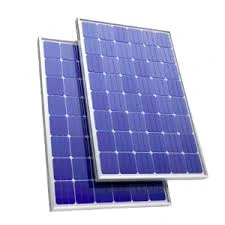solar array sizing
Understanding Solar Array Sizing A Comprehensive Guide
As the world increasingly turns to renewable energy sources, solar power has emerged as one of the most viable options for sustainable energy generation. An essential aspect of setting up a solar power system is properly sizing the solar array. The efficiency and effectiveness of a solar installation depend heavily on how well the solar panels are sized to meet the energy needs of a household or facility.
What is Solar Array Sizing?
Solar array sizing refers to the process of determining the appropriate number and configuration of solar panels needed to generate sufficient energy to meet a specific electricity demand. This involves evaluating various factors, including energy consumption patterns, available sunlight, and the characteristics of the solar panels being used.
Key Factors to Consider
1. Energy Consumption The first step in sizing a solar array is to analyze the energy consumption of the building or facility. Utility bills, energy audits, and annual energy usage reports can provide valuable insights into how much electricity is used over a month or year. This information helps in estimating how much solar energy will be required to offset or reduce reliance on grid power.
2. Peak Sun Hours The geographical location of the solar installation plays a significant role in determining the amount of sunlight the panels will receive. Peak sun hours refer to the average number of hours per day when solar irradiance is strong enough to effectively generate electricity. Understanding local climate conditions is crucial, as it directly impacts the efficiency of solar panels.
3. Solar Panel Specifications Different solar panels have varying efficiencies and power outputs. High-efficiency panels may generate more electricity in smaller spaces, while standard panels might require more area to produce the same amount of energy. When sizing a solar array, it’s important to consider the specific specifications of the panels being considered, including their wattage ratings and potential degradation over time.
4. System Losses Energy losses occur in any solar power system due to factors such as shading, inverter efficiency, and temperature fluctuations. These losses typically range from 10% to 20%. Therefore, it is essential to account for these losses when calculating the total number of panels required to meet energy production goals.
solar array sizing

The Sizing Process
To size a solar array effectively, follow these steps
1. Calculate Your Energy Needs Start by reviewing your electricity bills to determine your average energy consumption. Convert this into a monthly or annual energy requirement in kilowatt-hours (kWh).
2. Assess Available Sunlight Research your location’s average daily peak sun hours using solar maps or local climate data.
3. Select Solar Panels Choose solar panels based on efficiency, performance ratings, warranty, and budget. Calculate the output of your chosen panels.
4. Factor in System Losses Adjust your calculations by factoring in the potential losses in the system.
5. Determine Array Size Use the following formula to determine the number of panels needed \[ \text{Number of Panels} = \frac{\text{Total Energy Needs}}{\text{Panel Output} \times \text{Peak Sun Hours} \times (1 - \text{System Losses})} \]
Conclusion
Solar array sizing is a critical component of designing an effective solar power system. By carefully evaluating energy needs, local solar conditions, panel specifications, and potential system losses, homeowners and businesses can develop solar systems that efficiently meet their energy demands. With the right approach, solar energy can become a reliable, sustainable source that contributes to a greener future.
-
Unlocking Energy Freedom with the Off Grid Solar InverterNewsJun.06,2025
-
Unlock More Solar Power with a High-Efficiency Bifacial Solar PanelNewsJun.06,2025
-
Power Your Future with High-Efficiency Monocrystalline Solar PanelsNewsJun.06,2025
-
Next-Gen Solar Power Starts with Micro Solar InvertersNewsJun.06,2025
-
Harnessing Peak Efficiency with the On Grid Solar InverterNewsJun.06,2025
-
Discover Unmatched Efficiency with the Latest String Solar InverterNewsJun.06,2025







